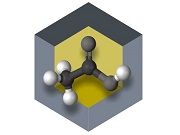Building an unconventional turbidimeter to measure very large particles in motion in water
| Challenge number : | 50655 | Opening Date : | 2019-11-13 |
| Status : | Solved | Closing Date : | 2019-12-14 |
Context
We wish to measure changes in particle sizes in the water under various operating conditions (high temperature,different physicochemical parameters like pH, conductivity, etc.) using a photometric measurement.
As the particles are very large and in motion, standard turbidity devices do not work: they are designed with a beamthat is too small to be exploitable.
Description of the challenge
We want to identify the most important parameters and the most reliable components for effective measurements:
- type of light source
- type of beam expander
- type of photometertype of interface for data
- acquisition, etc.
Regarding optics, here is a diagram of the proposed assembly:

Constraint(s)
- The optical setup consists of a light source (laser or diode) followed by a beam expander, an observation cell,then a beam reducer and finally a photometer of which the measurements can be transferred to a computer.
- The laser (or diode) should have a wavelength of 635 nm or more, as the solution will contain dissolved compounds that absorb at lower wavelengths.
- The expanding beam should be as big as possible to give an average of a large volume of the suspension.
- For data acquisition, the system should have the following characteristics:
-
- The photometer should be able to measure transmitted energy at least every 500 milliseconds.
- Measurements should be able to be transmitted to a computer via a USB cable preferably.
<6 months
Contact us
Cloé Bouchard-Aubin, chimiste, MBA
Advisor, Technology and Innovation
 514 632-2429
514 632-2429
Log in below





